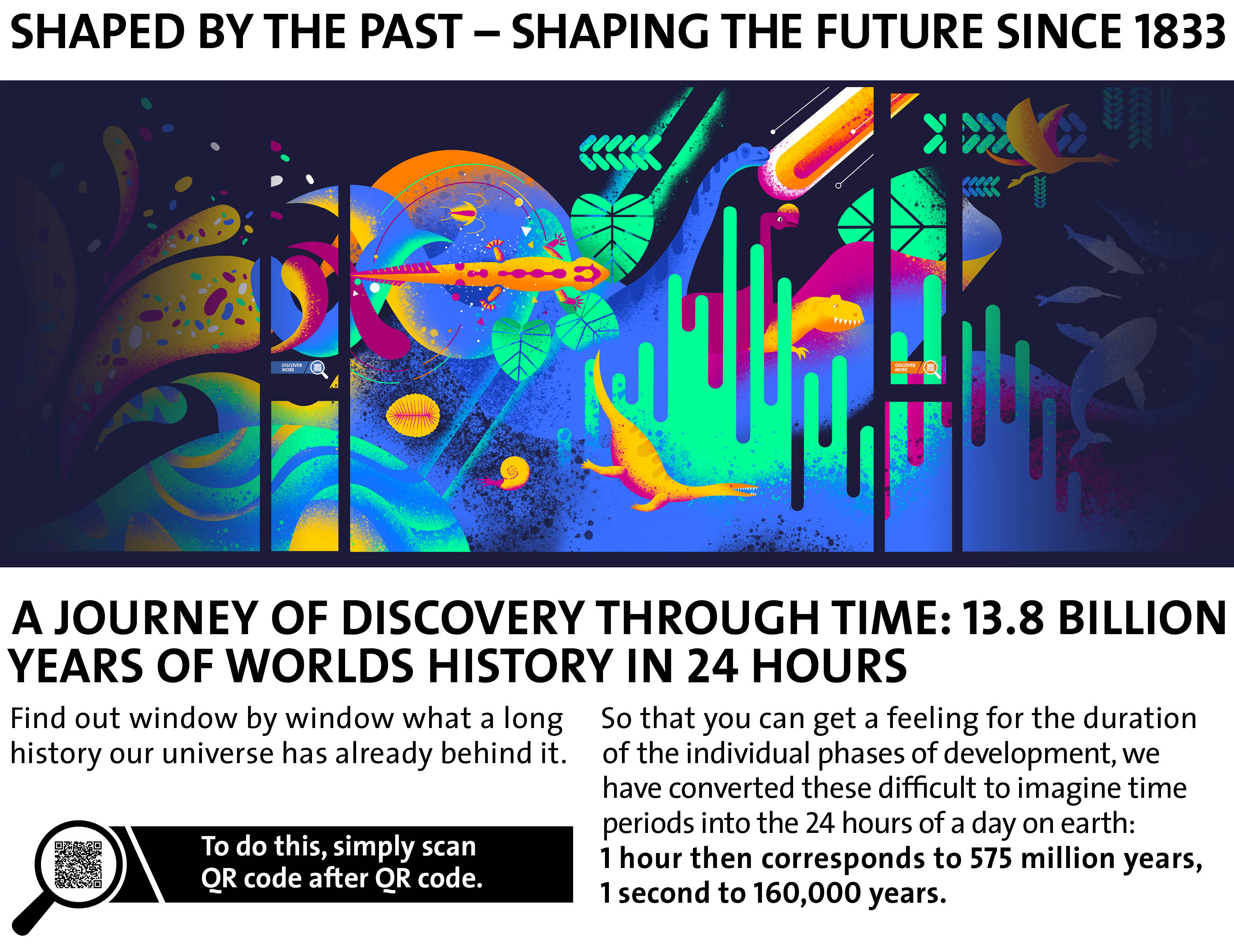Almost like in an action thriller: Let live and die (out)

10:37 p.m. – 11:55 p.m.
Water and land are full of life
The first multicellular life forms emerged 800 million years ago, and the diversity of species on earth is increasing: organisms with and without spine, predators and prey, seabed dwelling creatures and active swimmers - and many more. Over time, life forms no longer just thrive in the oceans, but also conquer the land. The conditions on earth are constantly changing, which leads to the emergence of new organisms, but also to the extinction of others. Sometimes changes happen so quickly and extremely that they result in mass extinction. In the most well-known of all mass extinctions, that of the non-feathered dinosaurs 65 million years ago, the earth has already seen four previous mass extinctions.

Dickinsonia is one of the oldest bilaterally symmetric multicellular animals on earth (i.e. animals in which the two halves of the body are the same). 560 million years ago (at 11:05 pm) it was part of the Ediacara fauna, a unique collection of soft-bodied organisms that have been preserved worldwide as fossilized impressions in sandstone.

In the context of evolution, the earth finds its "green thumb" late: the first land plants emerged only 470 million years ago (at 11:12 p.m.).

The first vertebrates on land evolved 370 million years ago (at 11:24 p.m.).

Reptiles show a variety of forms not only on land, but also in water. Marine reptiles have also lived in Switzerland, e.g. 240 million years ago. More than 25 species of marine reptiles have been described from the deposit on Monte San Giorgio (TI).

11:55 p.m.
An asteroid impact leads to the mass extinction of three-quarters of all plant and animal species on earth - including non-feathered dinosaurs, pterosaurs and ammonites. But that was not the greatest mass extinction in geological history ...
MNF institutes studying these topics
Return to: |
Continue to: |